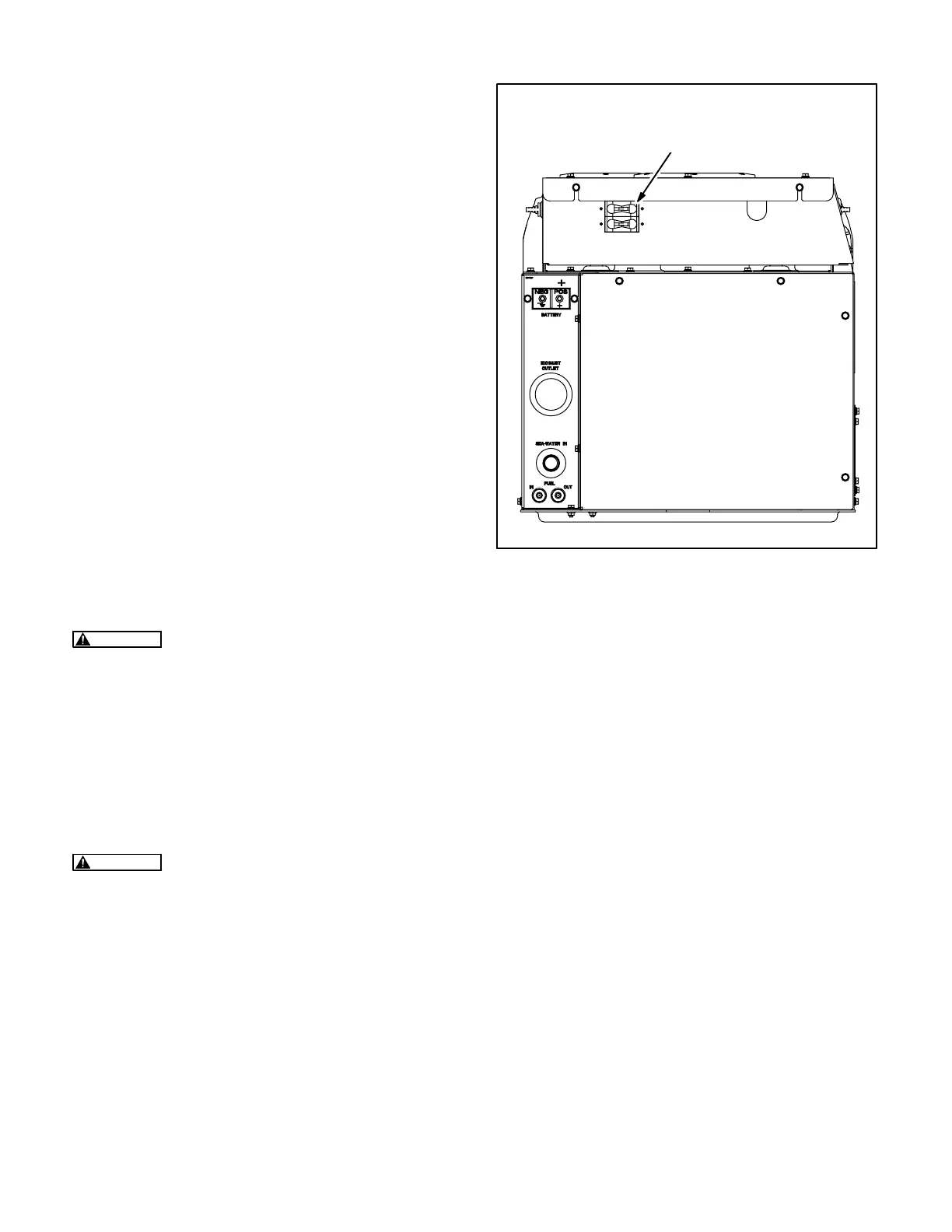3-5
NO-LOAD OPERATION
Keep no-load operation to a minimum. During
no-load operation cylinder temperatures drop to the
point where fuel does not burn completely, causing
fuel wetting and white smoke. It is best to run the
genset at 1/4 to 3/4 load.
RESETTING LINE CIRCUIT BREAKERS
If the genset line circuit breaker trips, or circuit
breaker in the power distribution panel of the boat,
either a circuit shorted or too many loads were con-
nected. Note that the genset will continue to run af-
ter a line circuit breaker trips.
If a circuit breaker trips, disconnect or turn off as
many loads as possible and reset the circuit break-
er. If the circuit breaker trips right away, either the
electrical distribution system has a short or the cir-
cuit breaker is faulty. Call a qualified electrician.
If the circuit breaker does not trip, reconnect loads
one-by-one up to a total load that does not overload
the genset or cause the circuit breaker to trip. The
circuit probably has a short if the circuit breaker trips
right away when it is connected.
Electrical equipment must be used and maintained
properly and be properly grounded to cause the line
circuit breakers to trip when short circuits occur.
WARNING
Short circuits in electrical equip-
ment can cause fire and electrical shock leading
to severe personal injury or death. Electrical
equipment and its grounding must be main-
tained properly to protect against short circuits.
CONNECTING TO SHORE POWER
When provisions have been made for connecting
shore power, the boat must have an approved de-
vice to keep the genset and shore power from being
interconnected.
WARNING
Interconnecting the genset and
shore power can lead to electrocution of utility
line workers, equipment damage and fire. Use
an approved switching device to prevent inter-
connections.
LINE CIRCUIT BREAKER HANDLES
PULL FORWARD FOR ON
FIGURE 3-3. TYPICAL LINE CIRCUIT BREAKERS
Redistribution or publication of this document,
by any means, is strictly prohibited.

